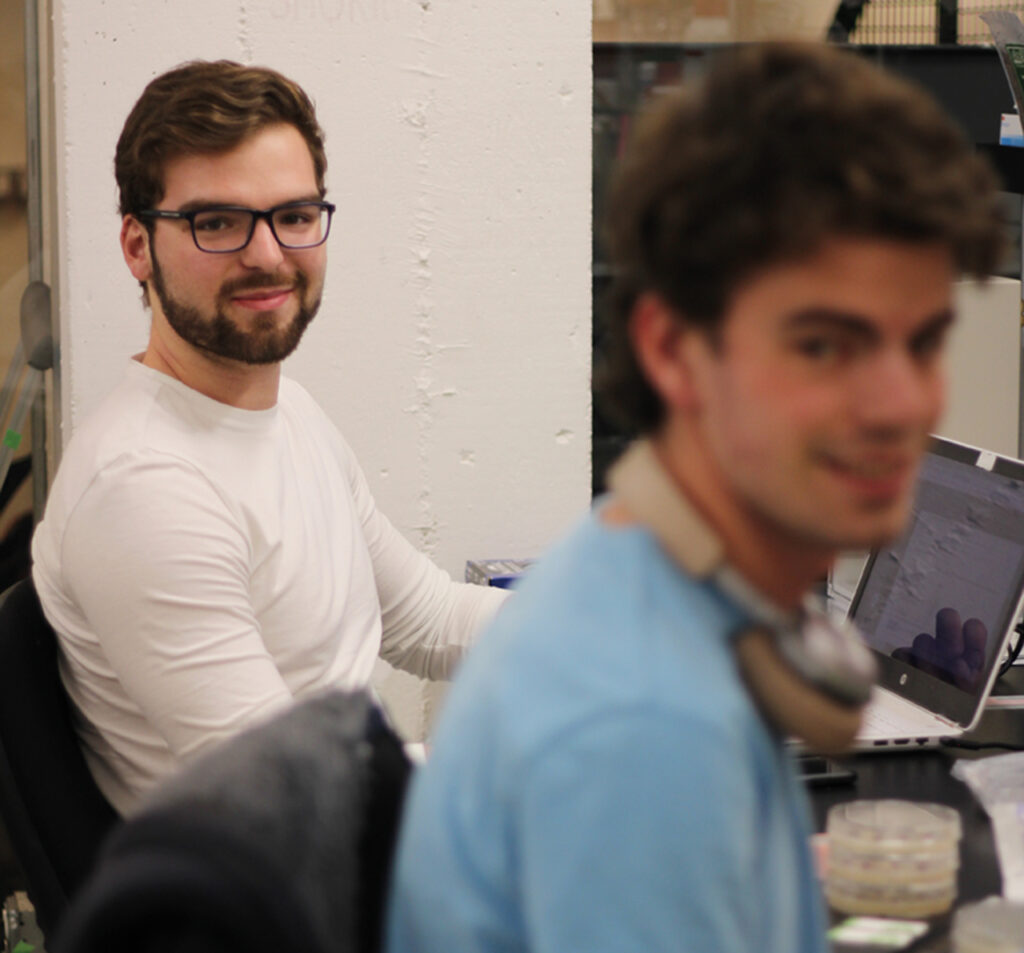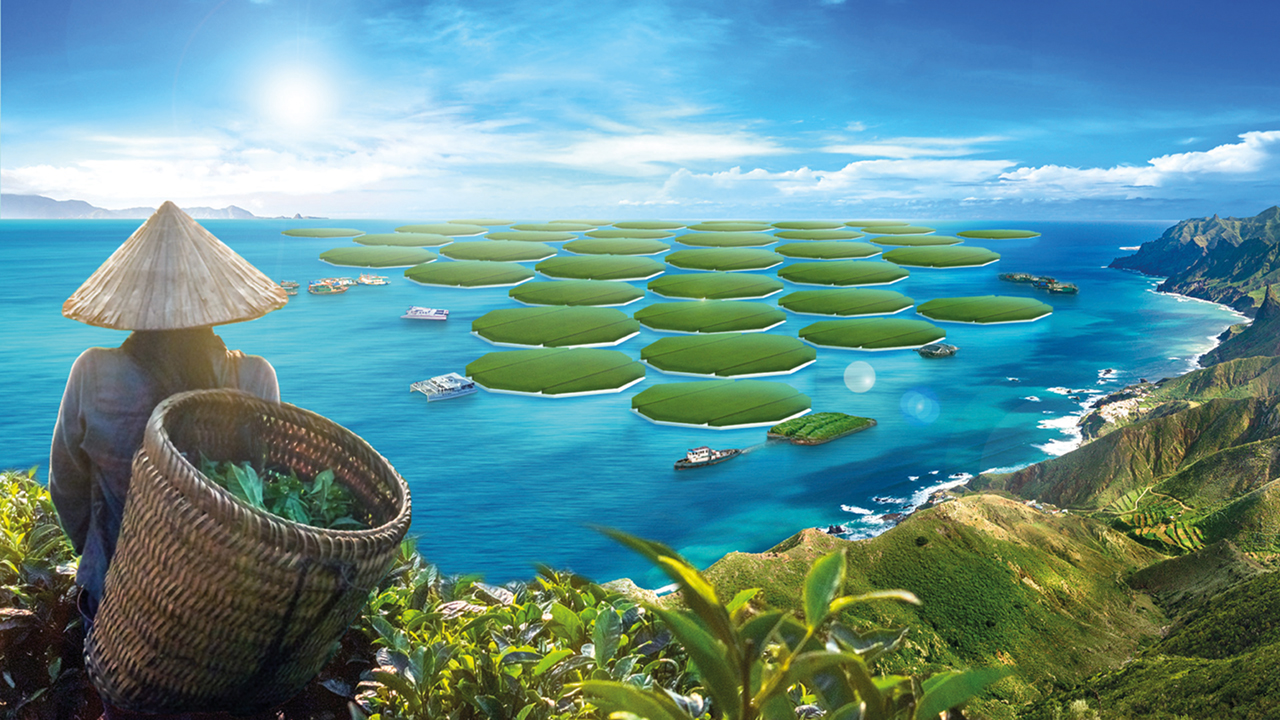Sea change in farming
With climate change threatening global harvests, two Yorkshire scientists might just have discovered the solution to world hunger in the middle of the sea
A few weeks ago, a package was flown from Canada to Singapore.
To customs officers it looked like just another carefully bubble-wrapped parcel. However, those nervously awaiting its arrival knew that its contents could quite literally sow the seeds of a food revolution.
“It was a bit of a heart in your mouth moment,” admits Luke Young, co-founder of a start-up company, Alora, which plans to turn the Earth’s seas into giant floating farms.
“Never has a package been so lovingly wrapped. Those seeds are the culmination of five years of hard work and this next 12 months is going to be key in proving that our idea works.”
The beginnings of Alora can be traced back to 2017 when Young was flying from the UK to Norway. Just before the plane disappeared into the clouds, the bioscience graduate happened to glance out of the window and it struck him that the water below was a massive untapped resource.
“The United Nations produces a list of what it calls sustainable development goals,” says the 27 year old. “One of them is ‘zero hunger’ and I’d been thinking about how you might achieve that.
“It just seemed to me that if you could harness the nutrients in the sea, it might just be possible.
“I started asking myself, could you start a giant floating farm out there?”
In order to answer that question, Young, who grew up in Easingwold, near York, persuaded his best friend and fellow University of Durham graduate Rory Hornby to join him on his quest.
Securing start-up funding, the pair began to put their theories to the test and it quickly became clear that they were onto something.
“Crops tend not to like salty conditions, but earlier this year we managed to grow rice plants in our Canadian laboratory that were tolerant to half the salt levels contained in typical seawater,” says Young. “It was a huge moment.”
Having secured £1.4m of funding from a number of sources, including Toyota Ventures, the investment arm of the car company, the pair are confident that they can achieve full tolerance in the near future. If they do, it could revolutionise farming, particularly in countries that are already feeling the devastating impact of climate change.
“One fifth of all land is currently too salty to either grow crops at all or produce a decent yield,” adds Young. “In somewhere like Vietnam, that means they miss out on £720m worth of crops each year. The Philippines, China and even the US are all affected by high salt content, and with rising sea levels – it is a problem that is only going to get worse.”

Between now and January, the pair are working on building their first pilot farm off the coast of Singapore and the aim is to create a system that will not only provide food but also generate energy.
“As well as growing rice on the surface, we are looking to use the whole depth of the ocean,” says Young. “The plan is to have lobster pots below the water’s surface and, by using solar panels and harnessing wave energy, the ultimate ambition is to create a floating farm that would be able to supply a large city and the surrounding area with all its basic needs.”
First, they need to test how the plants grown in the laboratory interact with the natural ecosystem. If that proves successful, they will not only be in a position to establish permanent farms but also to respond to global emergencies.
“If a country is experiencing drought or has been devastated by a natural disaster, that is when these farms could really come into their own,” says Young. “We can go anywhere in the world and set one up and it can be producing a crop like kale in a matter of weeks and the first rice harvest can be ready in four months.
“The plants don’t need soil; they don’t need freshwater. The farms are really quick and simple to install and harvesting the crop is also relatively straightforward.”
According to latest figures, more than a quarter of the world’s population lives in countries where the food supply is insecure. With global food demand also expected to rise by 60 per cent by 2050, that could tip many populations into chronic food poverty.
Traditional agriculture, which often relies on artificial fertiliser and huge amounts of freshwater irrigation, also brings its own environmental problems. However, the ocean farms are also designed to be fully sustainable.
Hornby, who is originally from Leeds, says: “If you took the same size area of rainforest, our farms will store up to three times the amount of carbon dioxide, one of the main contributors to climate change, and they are also methane negative.
“Our aim is to install these farms as close as we can to major cities and settlements so that the distance from farm to fork will be minimal. We want to work with governments as we think that’s the way we can have the most impact, and response so far has been incredible.
“Food poverty is a real and present problem. Even now it is a struggle to feed the world’s population and the situation is only going to get worse, so in many ways we are pushing at an open door.”
The pair’s optimism is infectious and while it has got them to this stage in the project’s development the road ahead is unlikely to be a smooth one.
“It is a really interesting development,” says marine ecologist and fisheries biologist Bryce Stewart, a senior lecturer at York University. “One note of caution I would sound is in regards to the claims that these farms will have no impact on the environment.
“Erecting any structure in the sea inevitably has a knock-on effect. Putting large areas of the seabed into the shade could be detrimental to the marine habit; if chemicals are needed to protect the crops as they grow, that run-off would also need to be carefully managed and then there’s the difficulty of harvesting crops at sea.
“All of these crops would also need to be processed before entering the world’s food supply and, however well managed and designed, all industrial processes have an environmental cost.
“However, while I don’t believe that there is a silver bullet that can end an issue as complex as world hunger, given the future we are facing, what we do need is young entrepreneurs like these to push the boundaries of what we currently think is possible.”
While Hornby had some success growing bonsai trees as a teenager and Young used to tend a vegetable plot in the back garden, both admit that until recently the idea of feeding the world would have felt a little ambitious.
Hornby says: “I guess what we have shown is that there is no problem that is too big to solve. Of course people said that what we are trying to do couldn’t be done, but we are proving them wrong.
“Our original message was to solve world hunger. Five years on, our mission has also evolved.
“Ocean agriculture can do far more than we first thought possible. It can support everything from food and energy production to the environment. We can change the world.”
The United Nations calls the ocean is “the world’s greatest ally in the fight against climate change”. As a producer of 50 per cent of the world’s oxygen – mainly from plankton – as well as trapping 25 per cent of all climate emissions, our ocean is the key to securing our climate’s future. As well as industrial hydroponics, to offset loss of arable land, there are a number of maritime fronts in the war to retain our climate.
Power solutions
The UK and many other countries have made use of offshore wind turbines and their vast power generating potential. But the ocean can generate huge amounts of tidal power too. The largest plant currently resides in Sihwa Lake Tidal Power Station, South Korea, which has an output capacity of 254Mw/H, or 552.7Gw per year. One report suggests the UK could generate 11 per cent of its electricity needs from tidal, but projects, including one in Merseyside, are currently stalled.
Green maritime trade
Most commerce takes place via the oceans and shipping. Smooth sea trading is such a key issue to the world’s great economies that anti-piracy operations are an area in which the West, Russia and China still co-operate. As a result, shipping is responsible for 3 per cent of all the world’s greenhouse gas emissions. Hybrid technologies for shipping using an element of electrical propulsion are however beginning their rollout, and other solutions, such as ballast-free shipping and low-sulphur fuels, are being widely adopted.
Coral projects
Coral reefs are intrinsic to sustaining an ocean’s biodiversity, yet these are increasingly under threat from pollution and fossil fuel exploration, particularly in Australia and the Gulf of Mexico. Projects such as Reef Doctor grow and plant artificial reefs, but another less likely source of coral restoration comes from the US Navy, which has started scuttling old ships in order to create a safe base for coral projects.
Alexander Garvey Holbrook
The idea of floating farms is also being developed closer to home. Scarborough-based SeaGrown recently launched a crowdfunding appeal to extend the seaweed farm it has established four miles off the Yorkshire coast.
It successfully raised £27,834 from 207 supporters in 28 days for the project, which boasts a number of environmental credentials.
“The seaweed we grow will be used to sustainably manufacture products like biodegradable plastics, bio-chemicals, natural food additives, textiles, fertilisers and of course as a highly nutritious food source for our growing population,” says Wave Crokes, SeaGrown’s co-founder and operations director.
The pioneering company was launched in 2018 with the aim of establishing a new method of farming that would allow seaweed to thrive in the often challenging open-water environment of the North Sea.
It is now producing 10 times more seaweed than originally planned. As well as absorbing tonnes of carbon, the seaweed also releases oxygen into the surrounding water, which could play a part in creating new marine habitats.
“The seaweed farming and harvesting sector is in its infancy but it is growing significantly,” says Dr Elisa Capuzzo, senior ecosystem scientist at the government’s Centre for Environment, Fisheries and Aquaculture Science. “In fact, the number of UK businesses has more than doubled in the last five years or so.
“There is quite a lot of debate in the scientific community around the role of seaweed aquaculture in helping to reduce carbon emissions and the sector is not without its challenges.
“For example more research is needed into everything from the running cost of farms to the scale of market demand. That said, seaweed does have a range of potential uses.
“It can be used as a salt substitute in foodstuffs and as the basis for sustainable packaging. Over the next two decades there is an ambition to increase the sector, but the pace of that growth will depend on overcoming the various challenges.”

Leave a reply
Your email address will not be published.